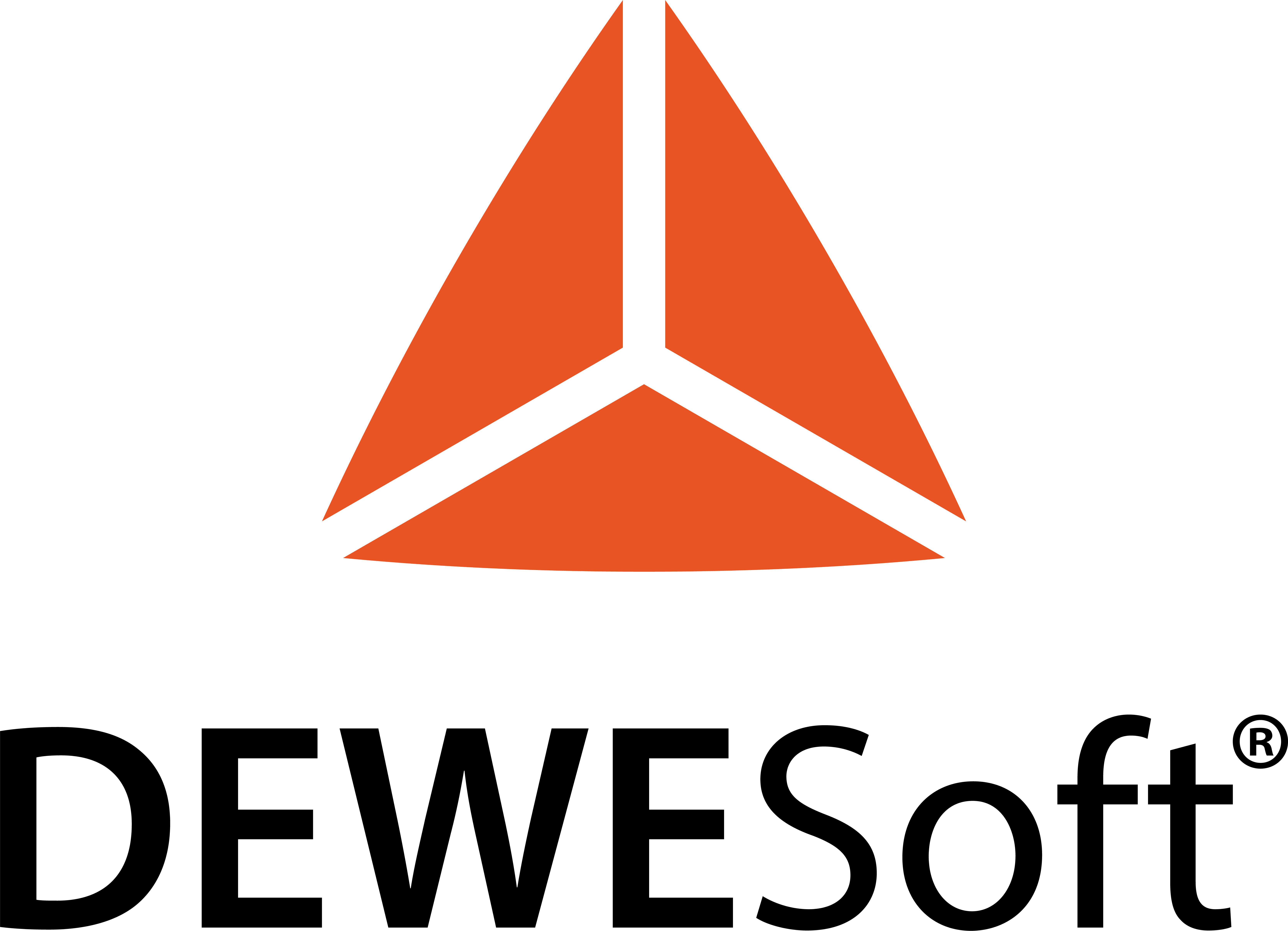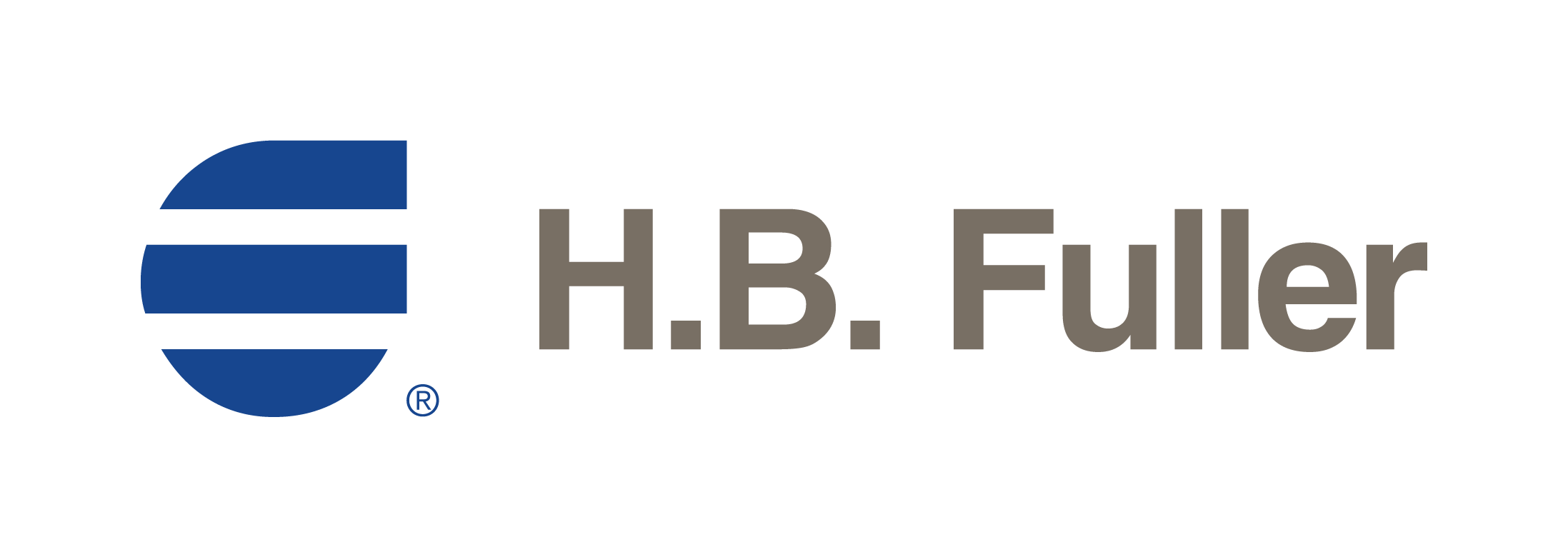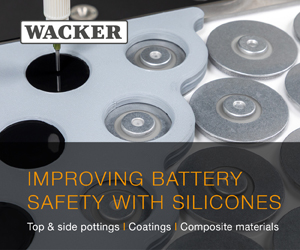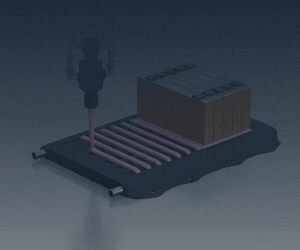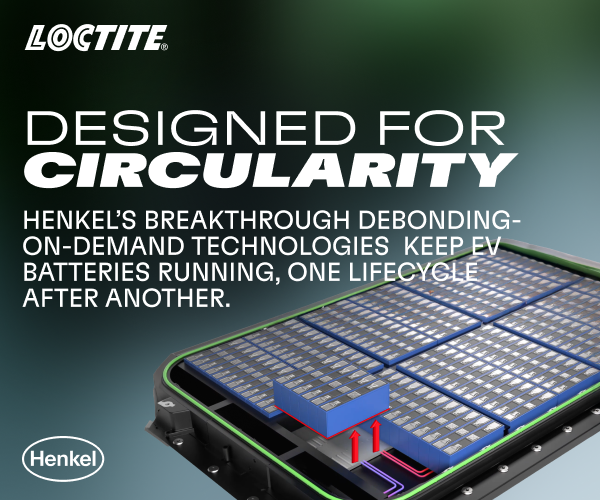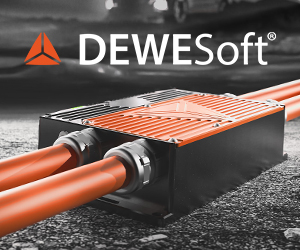The Battery Show Europe

Peter Donaldson plugs into the power behind e-mobility battery development exhibited at The Battery Show Europe 2025
Walking the exhibition floor at The Battery Show Europe, held in Stuttgart from 3–5 June, revealed a wealth of new developments in r&d tools and platforms, cell components, high-voltage connectivity, joining processes and factory development, energy storage, drive module design, and battery management, repair and recycling.
About:Energy is accelerating battery development through its data-driven modelling platform, which is designed to help engineers compare cells and optimise pack designs without physical testing. The company’s cloud-based Voltt platform integrates lab-validated electrical, thermal and degradation models for over 30 commercial and proprietary cells, with new additions weekly.
“We’ve cut modelling time to three weeks per cell, letting customers simulate performance under their own drive cycles before committing to physical prototypes,” said Lorenzo Bergamaschi of About:Energy. The platform supports thermal analysis, critical for evaluating cooling strategies across all form factors: cylindrical, large-format prismatic or pouch cells.
Originally serving automotive clients, About:Energy is now expanding into aerospace, addressing niche requirements such as mixed-chemistry packs. The upcoming Voltt platform update enables direct simulation without third-party tools, offering free trials for rapid evaluation.
While currently focused on performance metrics, both safety and anomaly detection are in development. The models already allow pack-level simulations by linking multiple cell models, useful for sizing packs using cells with the highest energy- and power-density available.

(Image courtesy of the author)
Albright International showcased its latest high-voltage contactors designed for EV battery systems. These contactors are engineered to handle high voltages, disconnecting large energy flows and effectively quenching arcs that could potentially weld contacts together. This is critical for ensuring safety in lithium battery packs, especially for off-highway vehicles, marine applications and DC power systems.
The HV500 series marks Albright’s evolution from low-voltage contactors to 1000 V/500 A bidirectional units capable of managing EV charging and vehicle-to-grid applications. These sealed contactors utilise two primary arc-quenching technologies: an inert gas mixture and high-powered magnets that stretch and dissipate arcs during emergency switching.
“Welding prevention is a top priority,” explains Albright’s Dean Crew. “To address this, Albright has engineered a robust design featuring a stronger coil and return spring that helps break micro-welds, along with optional silver contact tips that reduce resistance and improve switching capabilities.”
The company’s global manufacturing footprint – with facilities in the UK, Lithuania, India and China – supports OEMs that require localised supply chains, Crew adds.
Albright’s contactors are designed to integrate seamlessly with battery management systems (BMSs), using mechanically linked auxiliary contacts to provide accurate position feedback, which is crucial for maintaining system integrity where milliseconds matter.
Astotec presented its pyrotechnic circuit breakers designed to isolate batteries during crashes or thermal runaway events. The Austrian specialist’s latest product, the CB100 mid-pack breaker, takes a surgical approach. Instead of disconnecting the entire battery, the breaker can isolate just the compromised section, explains Astotec’s Gabriel Szabo. “This results in lower cut-off currents and it makes life easier for both the manufacturer and the vehicle owner because you only have to exchange the damaged part.”
These innovations reduce repair costs while maintaining safety, particularly valuable for high-voltage systems up to 1000 V. The breaker achieves disconnection in under 2 ms using a pyrotechnic piston driving a sharp-edged punch made of a hard material to cut a blank out of the copper busbar, while proprietary arc-quenching technology handles the resulting 50,000 Kelvin plasma.
While the CB100 can switch energies of up to 60 joules, its larger CB1000-2 sibling cuts off up to 3500 joules in around 0.6 ms, which means handling power of about 12 MW.
The engineering challenges are formidable. Materials must withstand extreme mechanical stresses while preventing electrical reconnection, even if a damaged vehicle is moved. Triggering comes from either BMSs or crash sensors, with strict 1.75 A/12 V activation requirements ensuring reliability.

(Image courtesy of the author)
brand group showed its extra-long busbars, developed to meet the growing need for robust power distribution in larger, more powerful EVs. brand’s busbars measure up to 2.53 m in length, and are designed to handle currents as high as 800 A in heavy-duty EVs.
These busbars connect charging ports to battery systems (rather than forming intra-module links) and must withstand strict mechanical and electrical demands. “Bending such lengths requires specialised machinery,” explains Jörg Ruhose of brand group. Post-bending, spark testing ensures insulation integrity, which is critical given the busbars’ tight packaging tolerances and exposure to torsional stresses in service.

Material innovation is also important, particularly in forming strong connections. Brand has engineered laser-welded butt joints for copper-to-copper connections, using compacted braids for flexibility. More challenging are copper-to-aluminium interfaces where oxide layers typically hinder reliability. “We’ve solved this with a proprietary method,” says Ruhose.
The company also demonstrates multi-axis bending capabilities, including twists, although the applications for these remain niche, Ruhose notes, and most requirements are for double busbars for charging systems, with spacer elements controlling precise separation.

(Image courtesy of the author)
BorgWarner’s Cascadia Motion highlighted some of its iM-425 integrated drive modules for commercial vehicles, on-highway, off-highway, defence and marine applications. The iM-425 (Inverter + Motor), is a compact, high-torque motor/generator designed for heavy-duty e-mobility applications such as Class 8 trucks, mining/off-highway vehicles, and generators. “This is all about torque in a really compact package,” explains Jesus Molina of Cascadia Motion.
The module integrates BorgWarner’s HVH410-150 motor core in a custom housing, integrated with a CM350 inverter, delivering 280 kW of continuous power and 425 kW peak power, with respective torque figures of 1580 and 2700 Nm, operating at up to 850 V DC and 6000 rpm. Weighing approximately 190 kg and measuring 420 mm in axial length and 546 mm in total height, it also has a shallow sump that extends 296 mm from the shaft centreline to the bottom. The system is also available with silicon carbide inverters, using BorgWarner’s Viper power modules, offering up to 2% efficiency gains over IGBT switches.
Cascadia Motion’s newest integrated drive module, the iM-575SiC was also highlighted in the show, featuring an oil-cooled, fully flooded internal design paired with a water–glycol (WEG) cooling system. As with all integrated drive modules, the WEG circuit cools the CM350SiC inverter first, then the oil (Dexron VI automatic transmission fluid), which in turn cools the rotor and stator via a dedicated heat exchanger.

Dürr presented the latest iteration of its advanced battery production concept, developed in cooperation with GROB, which the company says achieves a 50% reduction in factory footprint and energy use compared with that of the earlier design unveiled in 2024. The breakthrough stems from two innovations: GROB’s Z-folding machine integrating notching into cell assembly, and Dürr’s dry-coating process for electrodes that eliminates the need for dryers and solvent recovery, according to Dürr’s Kristin Roth.
“We’ve eliminated energy-intensive drying and solvent recovery systems entirely,” Roth explains. The dry process uses a dry-mixed active material that is pressed into a free-standing film without a current collector, enabling 100% material reuse until the film is laminated onto the current collector. Excess active material gets recycled directly, contrasting with wet coating where the active material is applied directly to the current collector, making waste recycling extremely difficult.
Where traditional plants required separate areas for drying and solvent recovery, the new concept does not require these steps, thereby saving space. The dry-coating line uses modified calendaring equipment to press films before low-force lamination onto current collectors.
Although the scalability of dry coating stalled earlier industry attempts, Dürr is confident. “We are currently demonstrating the proof of concept of the dry-coating process on a scaled-down gigafactory model,” Roth says. In collaboration with a cell manufacturer from the automotive industry, Dürr plans to implement the technology in a pilot line on a gigawatt scale.

(Image courtesy of the author)
Hutchinson Automotive introduced an integrated refrigerant module using propane (R290) as the working fluid. Designed to optimise thermal management in EVs, the module offers significant weight savings, efficiency gains and sustainability benefits.
The compact system integrates short refrigerant lines, compressor brackets, and sensor arrays, serving both battery and cabin cooling loops. “The advantage is weight saving; we use less refrigerant compared to R1234yf systems, and the design allows for dual modules in a vehicle, reducing line length,” explains André Schittenhelm of Hutchinson Automotive.
Propane operates at lower pressure and temperature than CO2-based systems, simplifying component design and enabling the use of standard refrigerant lines instead of costly metal alternatives. The system is regulation-compliant, with Europe favouring propane and North America exploring CO2 owing to safety considerations. “The quantity of propane is limited for safety, but the system maintains cost efficiency and material compatibility with existing R1234yf components,” Schittenhelm adds.
Beyond refrigerant modules, Hutchinson also develops cooling fluid modules featuring TPV-knitted plastic lines. These lines offer a 20–30% weight reduction and a lower CO2 footprint compared with traditional EPDM hoses. Their layered construction ensures flexibility and durability, validated through OEM lifetime testing. The design supports sustainable materials, incorporating up to 30% bio-based or recycled content.
Currently in the quoting phase, Hutchinson expects the propane module to be market-ready within 2–3 years.
Heimdalytics discussed how it aims to bridge the gap between laboratory-grade analysis and real-world battery management with its Artificial Intelligence (AI)-driven state estimation platform. By combining electrical impedance spectroscopy with machine learning, the system detects subtle degradation patterns that conventional BMS parameters often miss.
The core technology excites battery cells with multifrequency current signals (up to 1.5 kHz) and analyses voltage responses to generate Nyquist plots. “Human eyes can spot correlations between these plots and a battery’s state of charge or health – we train AI to automate this,” explains Fabian Franke of Heimdalytics. Unlike single-point measurements, this approach captures frequency-dependent resistances in just 3 minutes, revealing early stage faults like dendrites or welding defects.
The system distinguishes between three critical states: state of health gauged with traditional capacity fade tracking; state of anomalies, which identifies latent issues such as internal shorts before performance degrades; and state of stress, detecting thermal risks faster than temperature sensors can by analysing impedance shifts, Franke says.
In final development for both diagnostic labs and embedded BMS applications, the platform will make use of fleet-wide data in the cloud for model retraining. “Future BMSs could update AI models dynamically,” notes Franke, with plans for commercialisation later this year.
For recyclers and second-life markets, the technology promises transparent battery passports – quantifying degradation mechanisms beyond simple capacity metrics.

(Image courtesy of the author)
Novac is pioneering the integration of supercapacitors into structural components, such as carbon fibre panels on cars, to address power density and space constraints in e-mobility applications. By embedding pouch-format supercapacitors within the frame, Novac eliminates the need for bulky external packs, repurposing the structure itself as an energy storage device. The pouch format was chosen because it can be shaped to conform to the contours of composite panels. “We exploit the structure of the car to embed a supercap that supports lithium-ion or sodium-ion batteries, ideal for handling peak power loads, and essential to reduce the battery pack degradation,” explains Novac’s Mattia Colalongo.
This approach is particularly beneficial for high-power applications such as Formula One, where rapid energy discharge is critical, and for aerospace, where weight savings are paramount. One potential aerospace application is in electric urban air transport vehicles, which need powertrains with high density in terms of both energy and power, which must be carefully balanced.
The supercapacitors use activated carbon with proprietary additives to enhance kinetics, enabling faster energy delivery. Novac is also developing hybrid supercapacitors, blending battery materials to improve energy density – although this involves a trade-off with power density. Cycle life exceeds 500,000 cycles, with aims to reach one million, driven by stringent control of impurities during manufacturing.
Aldo Girimonte of Novac highlights advancements in Gen 2 electrolytes. “Hybrid polymer-inorganic electrolytes can increase voltage stability, boosting energy density,” he says. “A few months ago, we were entirely focused on r&d, but now we are standing up a pre-pilot and pilot line to scale up production.”
Henkel is addressing one of the critical challenges in modern battery design with its innovative ‘debonding on demand’ adhesive technology. As battery architectures evolve toward cell-to-body and structural designs, the need for repairable and recyclable solutions has become paramount.
The company’s breakthrough adhesive maintains thermal conductivity properties while introducing a game-changing capability: electrical debonding.
Unlike traditional thermal debonding methods that risk damaging sensitive battery components, Henkel’s solution uses an electrical current to release bonded surfaces in seconds. During a live demonstration, aluminium surfaces bonded with the adhesive separated cleanly when electrodes were applied, leaving minimal residue that could be easily removed for immediate rebonding.
The technology serves multiple critical functions across the battery life cycle. In production environments, it enables efficient rework of bonded components without destructive disassembly. For aftermarket repairs, technicians can replace individual cells or modules without compromising the entire pack. Perhaps most significantly, the solution facilitates end-of-life recycling by allowing clean separation of battery materials from structural components.
Henkel battery recycling expert Philipp tho Pesch emphasises the broader industry implications. “Electrical debonding is the ideal solution for applications close to battery cells. It enables safe disassembly while maintaining the integrity of components for reuse or recycling.”
Henkel also seeks to revolutionise adhesive development through its AI-driven material development platform, as detailed by Henkel’s Dr Keon Lee. Over the past year, the company has made significant strides in expanding its material database and creating integrated workflows that connect formulation directly to material properties. This represents a fundamental shift from traditional trial-and-error methods to a simulation-first approach.
The system now generates material cards that allow customers to simulate mechanical, thermal and application performance before physical testing begins. “We’re working in reverse from the classical approach,” explains Dr Lee. “Instead of testing formulations to find properties, we start with the desired properties and use AI to determine the optimal formulation.” This capability is particularly valuable for battery pack assembly and structural components where material performance is critical.
At the core of the innovation is Henkel’s proprietary AI algorithm, which predicts adhesive behaviour. After virtual validation, the process moves to physical testing – but only with the most promising formulations identified by the AI, significantly accelerating development cycles.
“Once we find the recipes, we just create the formulation and repeat the test task for validation,” Dr Lee explains. “Once it’s validated, then our customer can just take the samples, and they can significantly save time and cost without running iterative simulations and tests.

Hollingsworth & Vose (H&V) is developing a glass-fibre-based thermal barrier for lithium-ion batteries. The non-woven material, BarrierPro, introduced at this year’s event, combines glass fibres with proprietary functional materials to withstand temperatures up to 1200 C while maintaining dimensional stability.
“We designed this material to compete with the best thermal barriers in performance while offering a cost-effective alternative to solutions like aerogels,” said Nick Zafiropoulos of H&V. The wet-laid manufacturing process allows strategic integration of functional additives to reduce thermal conductivity.
Currently in rolled-good form, the material is tailored for cell-to-cell applications, with potential for die-cutting to fit prismatic, pouch or even certain cylindrical cell configurations. While internal testing has demonstrated thermal stability through torch testing, H&V is now engaging with converters and OEMs for sampling and system-level validation.
Rockwell Automation presented its digital twin platform Emulate3D designed to address the complexities of battery manufacturing, from plant simulation to identifying potential control issues pre-emptively. Enhanced by NVIDIA Omniverse capabilities, the Emulate3D Factory Test enables large-scale virtual testing of entire production facilities, integrating diverse automation systems regardless of PLC brand. “The solution allows engineers to simulate machine behaviour, analyse throughput, identify bottlenecks, validate control logic and train operators in a virtual environment before physical deployment,” explains Dominique Scheider of Rockwell Automation.
The platform prioritises risk mitigation by focusing on critical subsystems, such as process control for mixing and calendaring, while interfacing with tools such as MATLAB for real-time physical reaction modelling. Rockwell distinguishes its approach by simulating plant logistics and machinery rather than battery chemistry, although it can embed third-party digital twins – such as thermal or vibration data from cell designs – into its models.
Beyond production, Rockwell partners with Circulor, a London-based firm, to implement battery passport solutions compliant with 2027 EU regulations. The platform enables end-to-end material and resource tracking from mining to end-of-life recycling, ensuring traceability.
Scansonic showcased advanced laser welding technologies designed for high throughput and precision in the manufacture of key components for e-mobility applications. Their Fast Component Welding (FCW) system, featuring a multi-scanner setup, enables parallel processing of components such as fuel cell bipolar plates and battery cells, significantly reducing cycle times. The system’s dynamically adjusted collimation optics ensure consistent beam focus, minimising thermal lensing effects and maintaining weld quality, according to Scansonic’s Dr Axel Luft.
For battery tray production, the ALO4-O optic combines oscillating laser beams with filler wire to bridge gaps up to 50% of the material thickness, producing crack-free welds e.g., in aluminium alloys. The ALO4-F and ALO4-L variants extend capabilities to hard-to-reach areas and vertical seams, enabling complete battery box welding with a laser. “Tactile seam tracking, a Scansonic hallmark, uses the filler wire as a self-renewing guide, reducing defects and rework in curved or irregular seams,” Luft says.
Material compatibility is another focus, with Scansonic’s systems now welding challenging combinations like nickel-plated copper to aluminium or steel. “Emerging single-mode and multicore fibre lasers, with spot sizes as small as 14 µm, open new possibilities for precision welding – and are of course a challenge for the optics,” he adds.
Scansonic is prepared for gigafactory scalability with its FCW system and is developing systems for 3 kW single-mode lasers and qualifying optics for 8 kW multimode lasers together with partner Brightlight Laser.

(Image courtesy of the author)
TE Connectivity showed its expanded ACI800 charging inlet range, that now covers all major regional standards, enabling up to 1000 A boost charging while addressing serviceability challenges. The modular system features core inlets for Type 1/2 (North America/Europe), GB/T (China) and CHAdeMO (Japan) standards, each with standardised rear connectors for simplified harness integration.
“We designed for both cost efficiency and serviceability – OEMs can replace just the inlet without rewiring entire harnesses,” explained Sandra Kraft of TE Connectivity. The connectorised rear interface allows automated harness assembly and post-accident repairs, particularly useful for commercial vehicles with long cable runs.
The platform incorporates thermal sensors to monitor 800 A continuous loads, with plastic/metal hybrid construction balancing performance and scalability.

Unlike fixed designs, TE’s approach uses interchangeable brackets to adapt core inlets to vehicle-specific mounting requirements. This modularity extends to DC fast-charging variants, where combo inlets share common AC interfaces across regions.
Uncountable presented its specialised r&d data platform designed to help battery researchers extract actionable insights from vast, siloed datasets spanning materials, formulations, cell development and test results. The cloud-based system replaces fragmented tools such as Excel with a unified interface for managing the entire battery development process. Researchers input experimental parameters and test results, while the platform’s relational database automatically links related data points.
“We help organisations optimise r&d resources and speed up innovation,” explains Tea Pavlek of Uncountable. “Teams spend less time searching for data and more time solving problems.”
Uncountable offers machine learning algorithms to analyse historical data, predict performance and suggest promising new experiments when engineers define new project requirements. The system compares past experiments against current goals, identifying material combinations that meet specific performance or cost targets. Lab technicians use the same platform to execute test protocols, with all results feeding back into the knowledge base, Pavlek explains.
The platform offers both traceability and predictive power, Pavlek says. Every cell’s performance can be traced to its constituent materials and processing conditions. The AI tools help teams avoid dead ends by recognising patterns across thousands of experiments, she emphasises.
Click here to read the latest issue of E-Mobility Engineering.
ONLINE PARTNERS



